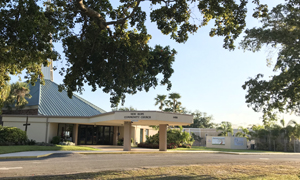Christ and His Organic Church
by Rev. Kirby Williams
Analyzing the essential elements of Christ and His organic church to the continuation and growth of the Kingdom of God on earth.
Text: Luke 13:18-21
Date: 02/25/2024, the Combined service.
Series: "Luke: Thy Kingdom Come" Part 139


Description:
After miraculously healing a woman with a severely bent spine, Jesus launches into two parables describing the growth of the Kingdom of God. At first there seems to be no connection until we realize that Luke is moving us seamlessly from the "one" to the "many". The woman represents how one person enters the Kingdom, when Jesus sets her bent soul straight. The parables reveal that she is not an isolated incident but the way the Kingdom of God will grow-- emanating from a single SEED, like leaven in a lump of dough, the unbent soul will be replicated again and again until the Kingdom is like a great mustard tree organically unified in Christ. We will analyze these two parables closely, considering both their individual and expanded principles when the two are viewed in tandem. Ultimately we will realize how important the Kingdom essentials of "Christ and His Organic Church" are to the continuation and growth of the Kingdom of God as it exists on earth. For Christ is the One Seed and the Source of the Organic Unity of the church, and the Christians who make up this church are the change-agents-- continuing His work by sharing His Gospel and bearing much fruit for the Kingdom.
View:
Options:
I. Introduction
II. Exposition of the text, Luke 13:18-21.
A. Context
B. Two Parables of Kingdom growth.
1. Jesus' rhetorical questions, vs. 18.
a. A continuation of thought.
b. Noticing the form, Isa. 40:3,18.
c. The content of the questions.
2. The external growth of the Kingdom of God, vs. 19.
a. The mustard seed.
i. Details of the parable.
1) A single seed, Gen. 3:15, John 12:24, Gal. 3:16.
2) That a man "sowed".
3) In his garden.
ii. The conspicuous absence of size, Matt. 13:32, Mark 4:31.
b. The resulting tree.
c. A nesting place for birds.
i. Representing demonic evil, Luke 8:12.
ii. Representing Gentiles in the Kingdom, Luke 13:29.
iii. Representing the positive impact of the Kingdom, Dan. 4:12.
d. The organic sustainability of the tree.
i. The organic nature of the tree, John 15:5.
ii. The sustainable nature of the tree.
e. The simple principle of the parable.
3. The repeated rhetorical question, vs. 20, Luke 13:20.
4. The internal growth of the Kingdom of God, vs. 21.
a. Analyzing the work of leaven.
i. Looking at the words.
1) Understanding "leaven".
2) Noticing "a woman", Gal. 3:28.
3) Visualizing "took and hid".
4) Quantifying "three measures of flour", Gen. 18:6, Judg. 6:19, Ruth 2:17, 1Sam. 1:24.
b. Putting the words together.
c. The simple principle of the parable.
C. Interpretation: Seeing the parables together.
1. Noting the anomalies.
a. Pointing them out again.
i. The choice of a mustard seed.
ii. The birds in the branches, Rev. 19:21.
iii. The idea of "leaven", Luke 12:1.
b. What they mean, Luke 12:56,57.
2. An organic view of the Kingdom.
a. The extraordinary growth of the Kingdom.
b. The way that growth will occur.
III. Application
IV. Conclusion, John 15:1,4-5,8-9.



